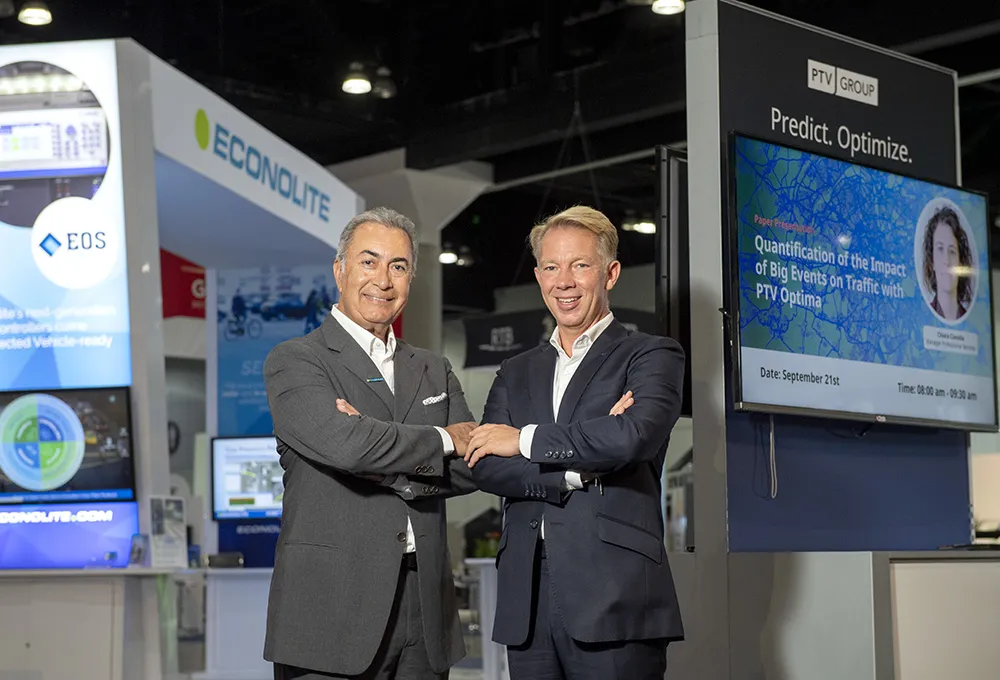Under a five-year agreement, manufacturer of video-based driver safety technology, Lytx, has deployed its Lytx DC Protect programme across the entire bus fleet of Hertfordshire-based Uno Bus.
The Lytx DriveCam programme helps prevent collisions, reduce injuries and save lives and money by combining video with predictive analytics, real-time driver feedback and coaching, enabling fleets to identify and correct driving behaviours that could lead to collisions. DC Protect is an efficient way for companies t
July 14, 2015
Read time: 2 mins
Under a five-year agreement, manufacturer of video-based driver safety technology, 7806 Lytx, has deployed its Lytx DC Protect programme across the entire bus fleet of Hertfordshire-based Uno Bus.
The Lytx DriveCam programme helps prevent collisions, reduce injuries and save lives and money by combining video with predictive analytics, real-time driver feedback and coaching, enabling fleets to identify and correct driving behaviours that could lead to collisions. DC Protect is an efficient way for companies to address fleet-wide risk without having to add resources to run the programme. Using the proprietary Lytx Safety Score, DC Protect helps identify and manage the drivers who will benefit most from coaching and performance improvement while protecting and exonerating safer drivers.
“We are always looking for ways to improve the safety, reliability, and quality of our services and, after evaluating the top providers in the market, Lytx was the best choice as the clear market leader in both safety and service. We are certain Lytx will provide the best return on our investment, while improving our bottom line results, too,” said Jim Thorpe, managing director for University Bus and Uno Buses. “DC Protect is an efficient, effective, and reliable solution that alerts us to just the driving behaviour we need to focus on. It empowers us to improve driver performance, increase driver and passenger safety, and maximise our resources and operations.”
“Ensuring the highest level of driver and passenger safety possible is a passenger transport provider’s most important mission, and we are delighted that Uno Bus has chosen Lytx DriveCam to help fulfil theirs,” said Damian Penney, Lytx Europe vice president and general manager. “Lytx technology provides the insight needed to proactively manage risk and increase safety and efficiency, and also helps to exonerate drivers when they are not at fault in incidents. It reduces collisions and claims which can lower fleet costs by between 50-80 percent.”
The Lytx DriveCam programme helps prevent collisions, reduce injuries and save lives and money by combining video with predictive analytics, real-time driver feedback and coaching, enabling fleets to identify and correct driving behaviours that could lead to collisions. DC Protect is an efficient way for companies to address fleet-wide risk without having to add resources to run the programme. Using the proprietary Lytx Safety Score, DC Protect helps identify and manage the drivers who will benefit most from coaching and performance improvement while protecting and exonerating safer drivers.
“We are always looking for ways to improve the safety, reliability, and quality of our services and, after evaluating the top providers in the market, Lytx was the best choice as the clear market leader in both safety and service. We are certain Lytx will provide the best return on our investment, while improving our bottom line results, too,” said Jim Thorpe, managing director for University Bus and Uno Buses. “DC Protect is an efficient, effective, and reliable solution that alerts us to just the driving behaviour we need to focus on. It empowers us to improve driver performance, increase driver and passenger safety, and maximise our resources and operations.”
“Ensuring the highest level of driver and passenger safety possible is a passenger transport provider’s most important mission, and we are delighted that Uno Bus has chosen Lytx DriveCam to help fulfil theirs,” said Damian Penney, Lytx Europe vice president and general manager. “Lytx technology provides the insight needed to proactively manage risk and increase safety and efficiency, and also helps to exonerate drivers when they are not at fault in incidents. It reduces collisions and claims which can lower fleet costs by between 50-80 percent.”









